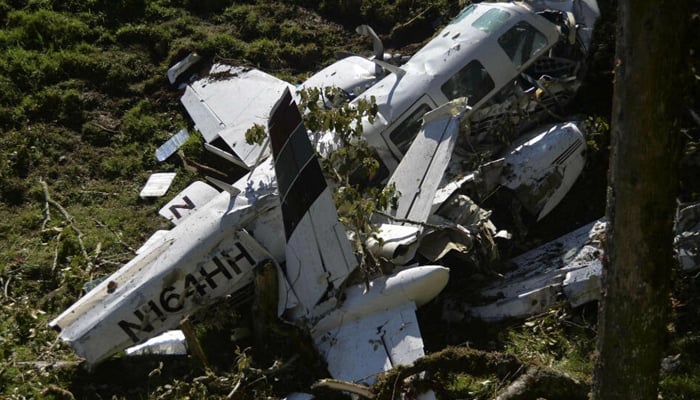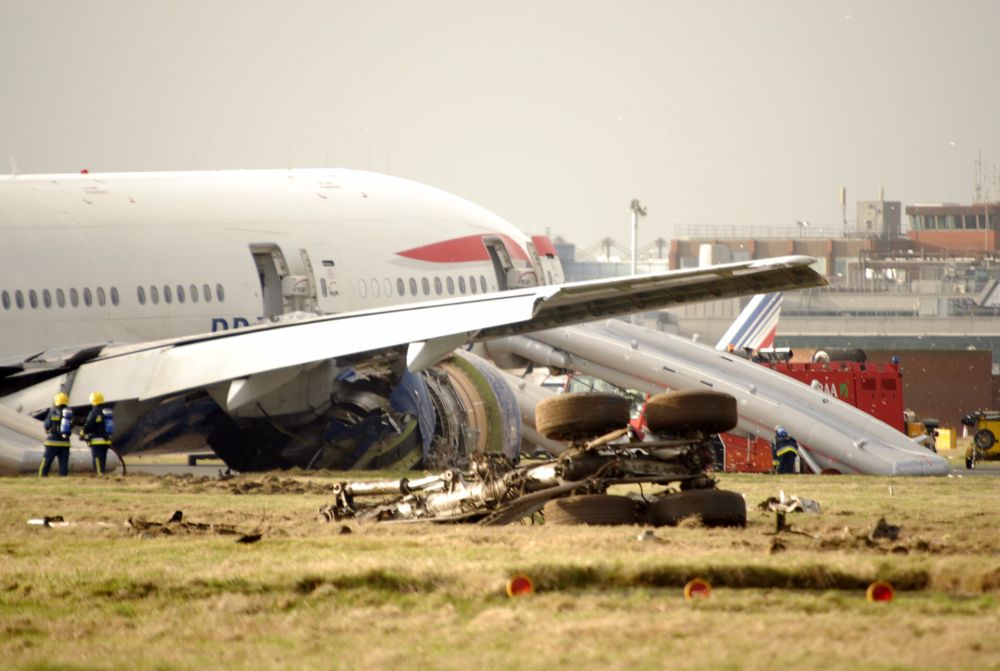History of Aviation Accidents in Brazil

Brazil has a long and complex history with aviation accidents. The country’s vast size and diverse geography, coupled with a rapid expansion of air travel, have contributed to a significant number of incidents over the years. Understanding the historical context of aviation accidents in Brazil is crucial for analyzing trends, identifying key factors, and assessing the progress made in aviation safety.
Significant Aviation Accidents in Brazil
The history of aviation accidents in Brazil is marked by several significant incidents that have had a profound impact on the country’s aviation industry and public perception of air travel. These incidents highlight the importance of safety measures, regulatory oversight, and technological advancements in mitigating risks and preventing future accidents.
- 1973 Varig Flight 837 Crash: This tragic incident occurred in Paris, France, when a Boeing 707 aircraft crashed during takeoff, resulting in 123 fatalities. The accident was attributed to pilot error and mechanical failure, highlighting the need for rigorous pilot training and aircraft maintenance protocols.
- 1982 Rio-Sul Flight 402 Crash: A Fokker F27 Friendship aircraft crashed near Rio de Janeiro, killing all 42 people on board. The investigation revealed that the accident was caused by pilot error and poor weather conditions, emphasizing the importance of flight crew training and situational awareness.
- 1989 TAM Airlines Flight 402 Crash: A Fokker F28 Fellowship aircraft crashed during takeoff in São Paulo, killing 96 people. The accident was attributed to a combination of factors, including pilot error, mechanical failure, and inadequate maintenance procedures, highlighting the need for a comprehensive approach to aviation safety.
- 2006 Gol Transportes Aéreos Flight 1907 Crash: A Boeing 737-800 aircraft collided with a Legacy 600 business jet over the Amazon rainforest, resulting in 154 fatalities. The accident was attributed to air traffic control errors and a lack of communication between the pilots, highlighting the importance of air traffic management systems and communication protocols.
Trends in Aviation Safety in Brazil
The Brazilian aviation industry has made significant strides in improving safety over the years. These improvements can be attributed to several factors, including:
- Enhanced Regulatory Oversight: The National Civil Aviation Agency of Brazil (ANAC) has implemented stricter regulations and oversight procedures, ensuring that airlines and aircraft operators comply with international safety standards.
- Improved Aircraft Maintenance Practices: Brazilian airlines have invested in advanced maintenance programs and technologies, ensuring that aircraft are properly maintained and meet safety standards.
- Pilot Training and Qualification: Flight crew training programs have been enhanced, ensuring that pilots are adequately trained and qualified to operate aircraft safely.
- Technological Advancements: The introduction of new technologies, such as collision avoidance systems and flight data recorders, has significantly enhanced aviation safety in Brazil.
Safety Records of Brazilian Airlines
Despite significant progress in aviation safety, Brazilian airlines have faced challenges in maintaining consistent safety records. The safety performance of Brazilian airlines has varied over the years, with some airlines consistently exceeding international safety standards while others have faced criticism for safety lapses.
- Comparison with International Standards: Brazilian airlines have generally been recognized for their safety performance, but some have faced challenges in meeting international standards.
- Factors Affecting Safety Records: Factors such as operational procedures, maintenance practices, and pilot training can significantly impact the safety records of Brazilian airlines.
- Impact of Safety Incidents: Aviation accidents can have a significant impact on the reputation of Brazilian airlines and the country’s aviation industry as a whole.
Causes of Flight Crashes in Brazil: Brazil Flight Crash

Brazil, a country with a vast and diverse geography, has a long history of aviation, both civil and military. While Brazilian aviation has made significant strides in safety, flight crashes unfortunately remain a concern. Understanding the causes behind these accidents is crucial for improving safety measures and preventing future tragedies.
Pilot Error
Pilot error is a significant contributing factor to flight crashes worldwide, and Brazil is no exception. This category encompasses a wide range of issues, including:
- Loss of Control: This can be due to factors such as improper aircraft handling, failure to maintain situational awareness, or inadequate training.
- Misjudgment: Pilots may misjudge weather conditions, runway length, or other factors, leading to dangerous situations.
- Fatigue: Exhaustion can impair a pilot’s judgment and reaction time, increasing the risk of error.
- Disorientation: Spatial disorientation, often experienced in low-visibility conditions, can lead to pilots losing control of the aircraft.
Mechanical Failure
Mechanical failure is another major cause of flight crashes. This category includes issues with:
- Engines: Engine malfunctions, such as power loss or failure, can result in catastrophic accidents.
- Aircraft Structure: Structural defects, such as fatigue cracks or corrosion, can compromise the aircraft’s integrity.
- Flight Control Systems: Failures in flight control systems, including hydraulics or electronics, can lead to loss of control.
- Avionics: Malfunctions in navigation or communication systems can contribute to accidents.
Weather Conditions
Weather conditions play a significant role in many aviation accidents. These factors can include:
- Thunderstorms: Turbulence, lightning, and wind shear associated with thunderstorms pose serious risks to aircraft.
- Fog: Dense fog can severely limit visibility, making it difficult for pilots to navigate and land safely.
- Wind Shear: Sudden changes in wind speed and direction can cause aircraft to lose control.
- Turbulence: Strong turbulence can damage aircraft or cause injuries to passengers and crew.
Terrorism
While less frequent than other causes, acts of terrorism have unfortunately contributed to some flight crashes in Brazil. These incidents highlight the vulnerability of aviation to security threats.
Recent Flight Crashes in Brazil
Brazil has experienced several high-profile flight crashes in recent years, each with its own unique contributing factors.
- TAM Airlines Flight 3054 (2007): This accident, which occurred at Congonhas Airport in São Paulo, was attributed to a combination of pilot error, runway conditions, and weather factors. The aircraft overran the runway, collided with a fuel truck, and caught fire, resulting in a significant number of fatalities.
- Air France Flight 447 (2009): While this flight originated in Rio de Janeiro, it crashed in the Atlantic Ocean. The investigation revealed that a combination of pilot error, faulty speed sensors, and icing conditions contributed to the accident.
- Gol Transportes Aéreos Flight 1907 (2006): This accident, which occurred in the Amazon rainforest, was caused by a mid-air collision with a private jet. The investigation pointed to pilot error and inadequate air traffic control procedures as contributing factors.
Challenges Faced by Brazilian Aviation Authorities, Brazil flight crash
Brazilian aviation authorities face numerous challenges in addressing safety concerns, including:
- Inadequate Infrastructure: Some airports in Brazil lack modern facilities and equipment, which can contribute to accidents.
- Limited Resources: Limited funding and staffing can hinder the ability of aviation authorities to effectively oversee safety regulations and enforce standards.
- Complexity of the Aviation System: Brazil’s vast territory and diverse aviation landscape present challenges in coordinating and managing safety across the country.
- Cultural Factors: Cultural factors, such as a tendency to prioritize speed over safety, can sometimes contribute to accidents.
Impact of Flight Crashes on Brazilian Society

Flight crashes in Brazil have a profound impact on the nation, leaving scars that extend far beyond the immediate tragedy. These incidents not only claim lives and disrupt travel but also inflict significant social and economic consequences, shaping the perception of aviation safety within the country.
Social Consequences
Flight crashes in Brazil deeply affect the families and communities of the victims. The loss of life is a devastating blow, leaving behind grief, trauma, and a sense of profound loss. The impact extends beyond the immediate circle of mourners, rippling through communities and impacting social cohesion.
Economic Consequences
Flight crashes in Brazil also carry significant economic implications. The loss of lives can lead to financial hardship for families who rely on the deceased for income. Additionally, the disruption of travel and the potential damage to infrastructure can cause significant economic losses for businesses and industries.
Impact on the Aviation Industry
Flight crashes can erode passenger confidence in the aviation industry. Following a major incident, airlines may experience a decrease in bookings, leading to financial losses. This can create a vicious cycle, as airlines may struggle to maintain safety standards due to financial constraints.
Role of the Media and Public Opinion
The media plays a crucial role in shaping public perception of aviation safety in Brazil. Sensationalized reporting can heighten public anxiety and lead to a decline in passenger confidence. However, responsible media coverage can also serve as a catalyst for positive change, highlighting safety concerns and demanding accountability from aviation authorities.
Brazil flight crash – The recent tragic flight crash in Brazil has brought to light the critical need for enhanced safety protocols in the aviation industry. While investigations into the cause of the crash continue, the event serves as a stark reminder of the fragility of life and the importance of prioritizing safety measures.
In a separate but related matter, the projected increase in Social Security benefits for 2025, as detailed in this article , offers a glimmer of hope for those impacted by such tragedies, providing a measure of financial security during times of hardship.
As the nation mourns the loss of life in the Brazil flight crash, it is crucial to remember the importance of both safety and support systems in navigating the complexities of life.
The recent flight crash in Brazil serves as a stark reminder of the fragility of life and the importance of safety protocols in aviation. The tragedy, while a somber event, offers a poignant counterpoint to the optimism surrounding the kenny pickett eagles , whose season promises excitement and potential.
While the flight crash underscores the potential for unexpected tragedy, the Eagles’ journey represents hope and the pursuit of excellence, highlighting the duality of life’s experiences.
